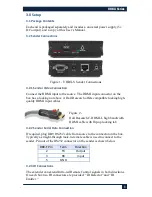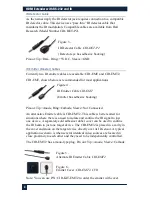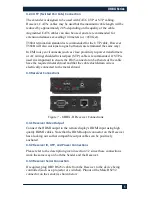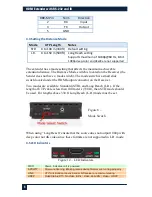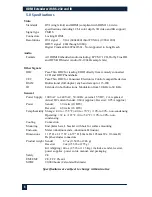
HDMI Extender with RS-232 and IR
4
IR Detector Cable
As the names imply the IR detector jack requires connection to a compatible
IR detector cable. This device uses “pass-thru” IR detector cable that
maintains the IR modulation. Compatible cables are available from Hall
Research (Model Number CIR-DET-P2).
Figure 3 –
IR Detector Cable
CIR-DET-P2
(Detector eye has adhesive backing)
Pinout: Tip=Data, Ring=+5V DC, Sleeve=GND
IR Emitter (Blaster) Cables
Currently two IR emitter cables are available: CIR-EMT and CIR-EMT2.
CIR-EMT, shown below, is recommended for most applications
Figure 4 –
IR Emitter Cable
CIR-EMT
(Emitter has adhesive backing)
Pinout: Tip=Anode, Ring=Cathode, Sleeve=Not Connected
An alternative Emitter cable is CIR-EMT2. This cable is better suited for
situations where there is a need to isolate and confine the IR signal to just
one device. A separately sold adhesive rubber cover can be used to confine
the IR beam to just one target device. The CIR-EMT2 is placed in a cavity in
the cover and stuck on the target device directly over its IR sensor. A typical
application scenario is when several identical video sources are located in
close proximity to each other and they need to be independently controlled.
The CIR-EMT2 has a mono-type plug. Pin out: Tip=Anode, Sleeve=Cathode
Figure 5 –
Alternate IR Emitter Cable
CIR-EMT2
Figure 6 –
Emitter Cover:
CIR-EMT2-CVR
Note: You can use P/N: CIR-KIT-EMT2 to order the emitter with cover.



